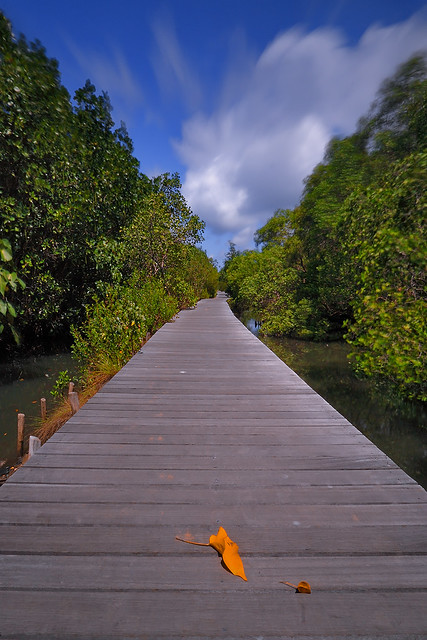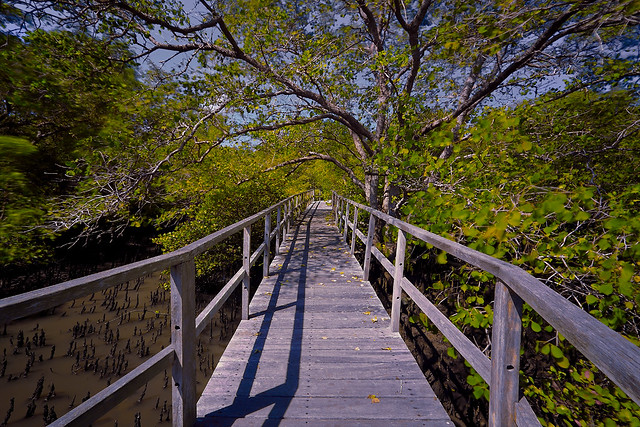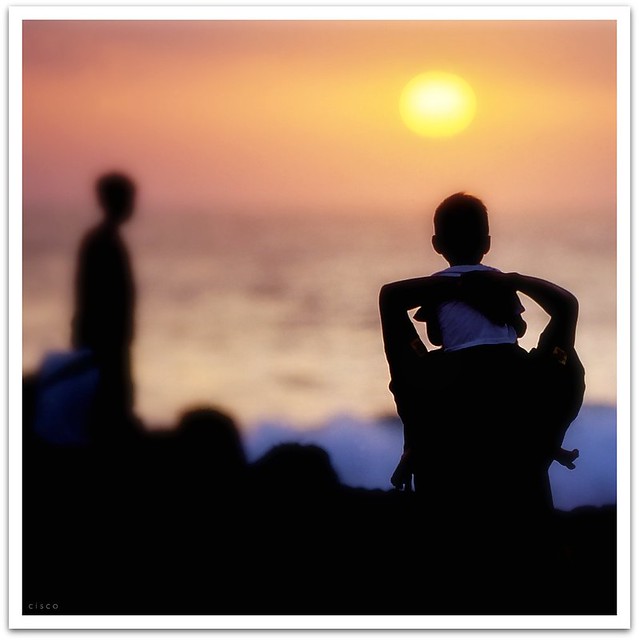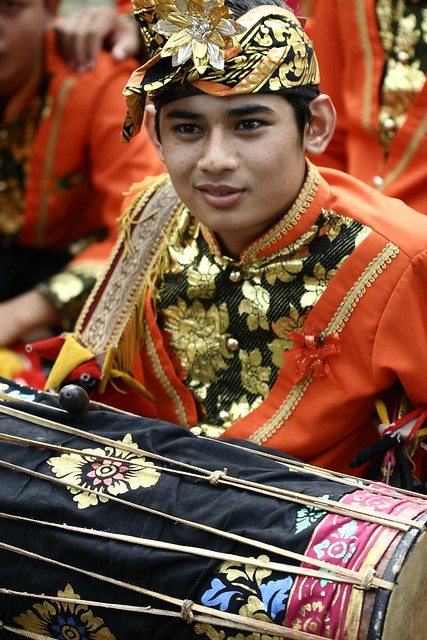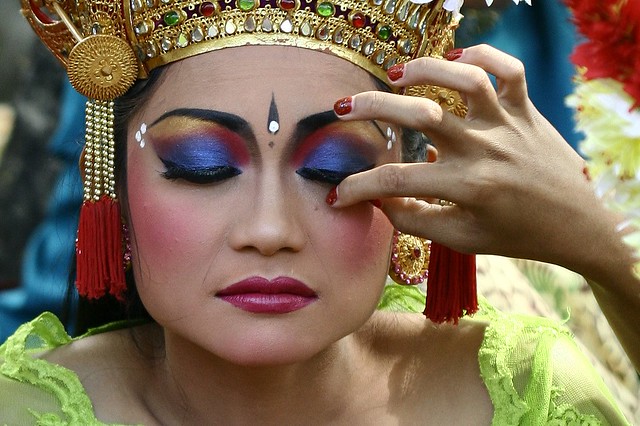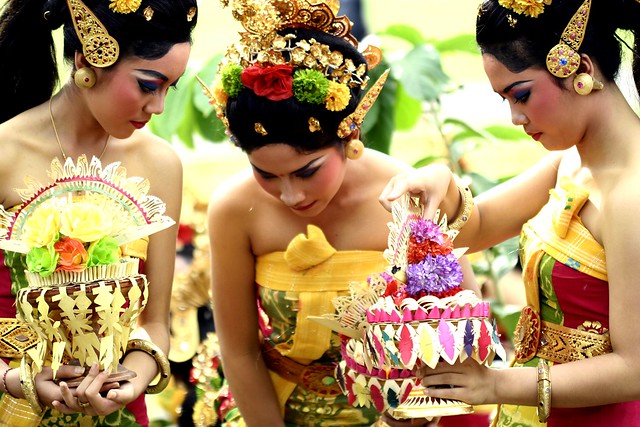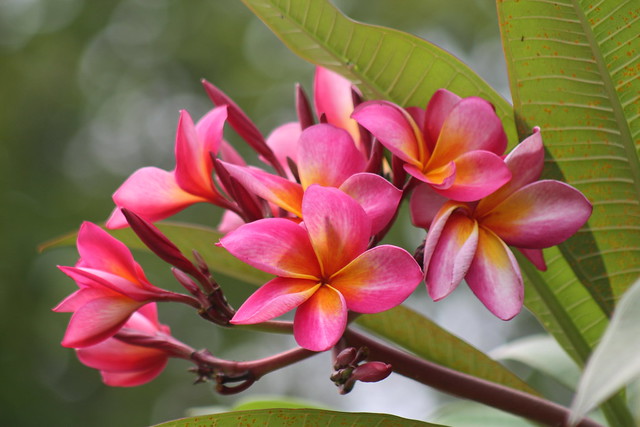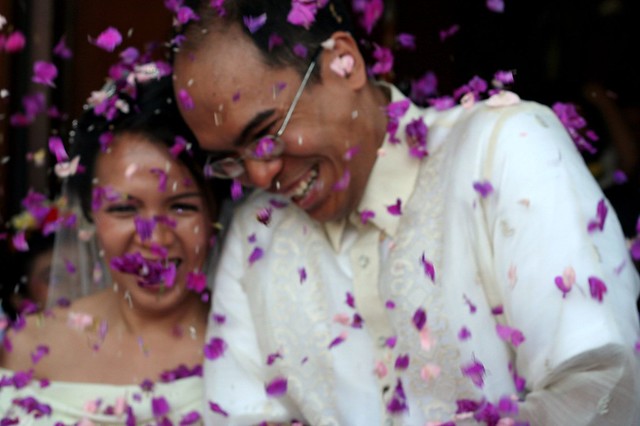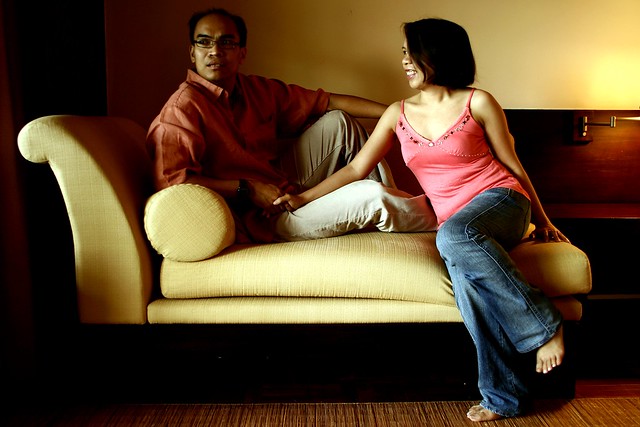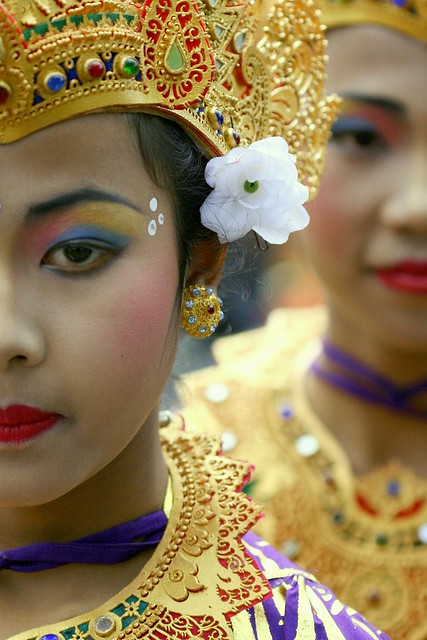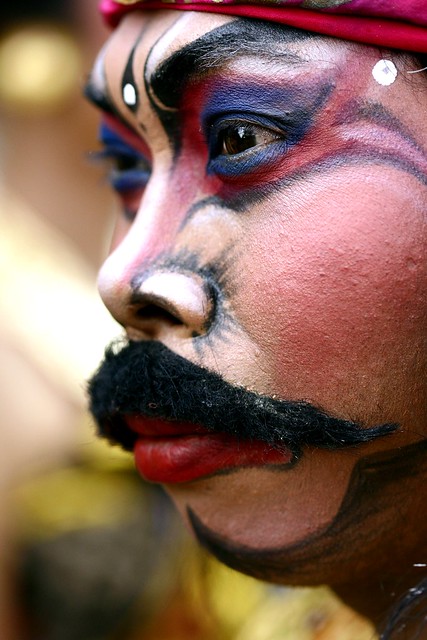Denpasar: the overlooked and underestimated capital city of Bali. A place that most travellers only pass through transiting to and from the airport, with windows up and doors locked, never venturing of the main drag. It goes without saying that western tourism has dramatically impacted South Bali and inner regions like Ubud. Yet somehow, despite being comfortably nestled between the two, Denpasar City has remained far removed and relatively untainted by the tourist masses.
For those with an adventurous spirit and a thirst to understand the urban culture of authentic Indonesian, an energetic and enigmatic city awaits. Throw away those travel books that suggest Denpasar City has nothing to offer. We’re here to tell you otherwise. A modern city and the economic centre of Bali, it boasts everything from five star hotels catering to the upper class business elite, to a mirage of high-rise shopping malls with Indonesian brands and unique styles. Sprawling with urban housing, local hangouts, charming cafes and a myriad of Indonesian cuisines, even just one day in Denpasar will offer an unveiling of the country’s culture.
Denpasar’s charm lies in the admirable way in which it retains such a strong hold on its cultural heritage and the traditions of the Balinese people, flawlessly combining the new with the old.
On any corner, you’ll spot street carts, busy warungs, and people selling snacks right off the back of their motorbikes; authentic Indonesian food experiences that favour the brave. With aromatic fruit markets, the sacred monument of Bajra Sandhi representing the struggle of the Balinese people, and charmingly aged Dutch buildings, Denpasar sure knows how to tantalise the senses.
It’s also home to Jagatnatha, an architectural masterpiece and the biggest Hindu temple in Bali, which showers the culturally curious with traditional dances, performances and costumes. Look past the slightly unkempt façade and fast paced nature, and find a multicultural city that greets its visitors with an exhilarating and refreshingly honest insight into the everyday life of the Balinese.
The biggest markets in Bali
Bali is famous for its incredible market collection. The biggest market of its kind in Bali, Pasar Badung is both exotic and enticing. Its lively and inviting atmosphere draws in locals by the hundreds, ready to sift through a stockpile of market goods for a fraction of their retail price.
Despite being a little shabby and dull from the outside, this four story concrete complex remains a strong driving force for the Balinese economy, with transactions and sales happening around the clock. Products manufactured right across the island and country are brought together and sold here, offering a treasure trove for those willing to dig.
Food, fruits, vegetables & beyond
Pasar Badung Market is also your best bet if you want to taste authentic Indonesian food and get it at local price. Head to the entrance of the market near the parking lot to taste Indonesian sweet pudding made from sugar cane, coconut and rice flour with various fruit toppings to choose from. It has enormous flavour and is keenly catered to local tastes, which often means lots of added sugar. If you’re a little hungrier slash on a sugar fast, dig in to the famous Balinese Sate Lelit (beef or fish skewered on a stick and barbequed) or try Ayam Bakar (barbequed chicken), which is a staple in the Indonesian diet. Another local delicacy to experiment with is Pisang Goreng (deep fried banana) often topped with strawberry and chocolate.
Needless to say, it is devilishly good. On the lowest floor, a positively overwhelming banquet of colourful fruits and vegetables await the hungry and inquisitive. There is also a large and pungent section of poultry and meats. Vegetarians and weak stomach folk be warned: this may be a touch more confronting than your average butcher back home. The smell of seeds and aromatic Indonesian spices fills the air and makes you sneeze as you head up the flight of stairs to the second floor. Here you can grab local cooking ingredients, assorted nuts and various local cakes. From around 12am – 4am is when the farmers sell their produce to the market, so this is the best time to grab the fruit and vegetables at their freshest.
Clothes, souvenirs & electronics
Many Indonesian cultural items including Batik and beautiful traditional dress fabrics line the walls of the third floor, the majority of which have been sourced and produced locally. You’ll also spot ready-made Balinese offerings and other Hindu prayer materials for time-poor Balinese families. It’s not a real holiday if you don’t buy souvenirs and gifts for those unlucky friends who had to stay back home.
By shopping at the local markets outside of Kuta and the main tourist areas, the price of everything will drop tenfold. Luckily for you, Pasar Badung has a plethora of handmade gifts and Balinese souvenirs available on the top floor, with its neighbouring market, Kumbasari, boasting an even greater array. If you need to fix a phone or buy anything technical, grab an Ojek (motorbike with driver) or taxi and head down to Jalan Teuku Umar, famous for its massive range of electronic and digital devices, you are sure to save a fortune getting something here compared to in a western mall.
Make sure you check out Jalan Surabaya after Pasar Badung to see the stunning fabrics available as well as the beautiful Balinese Kebayas and traditional dress. If you came for the cheap clothing, these stalls open just after 8am.
The night markets
Things remain busy right around the clock, with the Pasar Senggol Night Markets opening up and operating from 4pm – 12am. If you need a late meal this is a great place to drop by, as most restaurants in the city are closed by 9 or 10pm. Cheap clothing, beaded bracelets and assorted girly accessories are just some of the fun the ladies can look forward too. You can also purchase tobacco in bulk, DVDs aplenty and a plethora of other random and fantastic consumer goodies.
Hot tips
Take your camera. There’s ALWAYS something going on here, from the busy merchants packaging their supplies, to the porters propping heavy straw baskets on the their heads offering grocery carrying services. This buzzing market provides generous opportunities for budding photographers to capture the beauty and chaos of everyday urban life. Those with a keen eye for detail and appreciation for art will also be pleased by what Badung market has to offer.
Be sure to haggle. Indonesians love to haggle, so if you haven’t had the opportunity to try it out yet, these markets are the perfect chance to test out your skills. As a general rule, try to bargain down to roughly half the price they first suggest. Choose your time wisely.Come early to make sure you grab the fruits before they sell out. Locals usually arrive at 6am or earlier! Make sure you don’t visit during important religious dates or events such as Nyepi or Idul Fitri (the end of the Islamic fasting month) when many of the stalls will be closed. You will find Badung Market and Kumbasari Market (opposite the river) on Gajah Mada Street, Denpasar.
Pasar Burung: Bird Market
The bird market that has attracted mixed attention in Bali for its massive range of rare and endangered birds and small animals. This is not for the faint-hearted, but if you’re an expat or local looking for an animal to love, this is the place to find it. Strategically located close to city transport and Bratang terminal, Pasar Burung is easy to access and easy to find.
Bali museum: Museum Negeri Propinsi Bali
If you’re a bit of a history geek, this place is filled to the brim with Hindu and Balinese heritage items dating back centuries. Opened to the public in 1934, it boasts a great collection of porcelain sculptures and statues, paintings and woodcarvings. On top of this, there are beautiful pottery and ceramics, ethnography and various ancient inscriptions and weapons.
With royal Balinese architecture, the building design itself is reason enough to visit on its own. Despite being rather disorganized and a little difficult to sort through, if you have the patience and are keen to learn about Bali and its interesting past, a trip to the Bali Museum is well worth your time.
Hot tip
It’s not necessary to get a tour guide. Although many guides will be very persistent in telling you otherwise, don’t feel pressured to hire one. This is one place that you can manage all on your own.
Bajra Sandhi: the Balinese struggle monument
This spectacular Hindu monument, located directly out the front of the Governor’s Office in Renon, is a historical shrine of significant importance. It pays homage to the struggle that the Balinese endured during the years in and around their battle for independence against the Dutch. It is a heroic symbol to the people of Bali, and an object of great pride.
The Bajra Sandhi Monument is divided into 3 units and is rectangular in shape. It gets its name “Bajra” from the religious bell it resembles, which Hindu priests ring while they are reading the “Mantra” (Hindu script) called the Weda Holy sentence. The rounded peaks called “Siwaghaga” are said to be a symbol of the Hindu God, Shiva Linggih. The bottom level is where you will find the majority of the information about the monument and exhibition. On the second floor, there are 33 different dioramas, each one with its own very detailed philosophy and story of the Balinese struggle throughout the years, dating as far back as the Balinese Kingship when Hinduism first imprinted itself on the island, and as recent as the proclamation of independence in 1949.
From the third floor, you can climb the stairs to the top tower of Bajra Sandhi and enjoy the panoramic view of the green surroundings and the monument below. Located in a large park with lush grass fields, you’re likely to see people riding bikes, running and picnicking with friends, especially on the weekends. There are great local street foods here too, in case you didn’t remember to pack your lunch. Bajra Sandhi was first built in 1987, but was only officially opened on 14th June 2003 by Indonesia’s then President, Megawati. Visiting will prove a great day out, and leave you a wealth of knowledge above the herds that don’t leave Seminyak.
Jagatnatha Temple
The biggest Hindu temple in Bali, Jagatnatha, is located right in the centre of Denpasar City. A must see cultural icon while you’re in Bali, it is easily accessed from many of Denpasar’s streets, making it an ideal place of prayer for locals. Unlike other major temples in Bali, Jagatnatha is cared for by volunteers and worshiping locals, not other organizations or committees. You can enter the temple by crossing a bridge (Titi Ugal-agil) over a fishpond.
The philosophy behind this being that every person who enters this way and comes to pray will be cleansed and purified. The main part of the shrine is called Padmasana, which is joined by two twin canopies that are used specifically as alters for Hindu ceremonies and as a place to keep the offerings. Other places of importance within the shrine are the altar of Sang Hyang Anantaboga, named after a Hindu God, and the Holy Water Well, which you can find North of the main temple. Jagatnatha Temple is located on Wisnu Street, Denpasar. You can’t miss it – and nor should you!
Taman Werdhi Budaya: Bali Arts Centre
Taman Wedhi Budaya is a stadium style complex, originally created in 1973 for Balinese cultural exhibitions and performances. However, for the majority of the year, it is more a showcase of impressive architecture and artwork than of cultural dances and traditions. This place explodes with a rarely experienced level of energy and vitality in the months of June and July when it becomes the annual hosting ground for The Bali Arts Festival.
Known to the locals as Pesta Kesenian Bali, the Bali Arts Festival is by far the largest cultural festival on the island. It is a month long celebration of Indonesian and Balinese cultural arts, including Wayang Kulit shadow puppet shows, traditional music including Gamelan, as well as Legong and Bari dances. Exhibitions and artworks make up a big part of the celebrations, with many beautiful pieces up for sale, too.
Here at The Arts Centre, the old meets the new, with fresh upbeat dance schools performing inspiring and modern pieces following traditional folk acts and animated stories with mythical characters and detailed masks. A perfect hybrid of Balinese culture.
Kertalangu cultural village: Desa Budaya
Located in Kesiman, East Denpasar, this cultural village and old ceramics crafting centre was originally built for farming and land conservation. With the rise of housing demands, many properties were (and still are) being built right on top of viable rice terraces. Local farmers then face the crisis of lacking space to plant crops and to continue their farming practices and business. This village has become a dedicated and protected area where local farmers can buy in to have a secure area to grow their rice and vegetables. Only recently opened to the public, it now also serves as a place for cultural activities including on request Balinese dancing such as the Barong and Kecak.
There are also arts and crafts, hands-on demonstrations, as well as pottery, ceramics and natural stone making demonstrations. Kertalanggun Cultural Village also offers workshops on garment making and glass manipulation. For the fitness fanatics, there are free sports facilities including a jogging track through the beautiful rice fields where you will see farmers working. If you need a break, stop and rest in the “bale bengong” (farmer’s huts) in the middle of the fields. With the fresh breeze hitting your skin as you look out upon the quaint scenery, you will be struck by the extreme contrasts within Denpasar.
Make the most of your time in the field and grab some small change Indonesian culinary favourites such as Bubur Ayam for only 5,000 RP (50 cents). The atmosphere is something you can’t put a price on and will always remember.
A few more hints
Another nice area to visit in Denpasar is the suburban area of Renon. Located in the south, Renon is an upper class area with nice restaurants and boutique hotels; another very different side of Bali that visitors should make the effort to see. Denpasar is the main transport hub of Bali, so if you’re planning to go to Java, or any one of Bali’s neighboring islands, you can make an easy bus trip to many of the ferry ports.
You will find many gorgeous warung cafés that sit modestly on the side of the roads all through Denpasar that you have to check out. Serving cuisine from Jogjakarta and various locations through the archipelago, you will be spoilt for choice. Check out Warung Santai and Mamasan, two very highly recommended eateries in the area.
Don’t leave humble Denpasar City off your itinerary list when planning your next trip to Bali. It has far too much to offer and is one of those places that will remain sketched on your heart long after you have left it behind.









